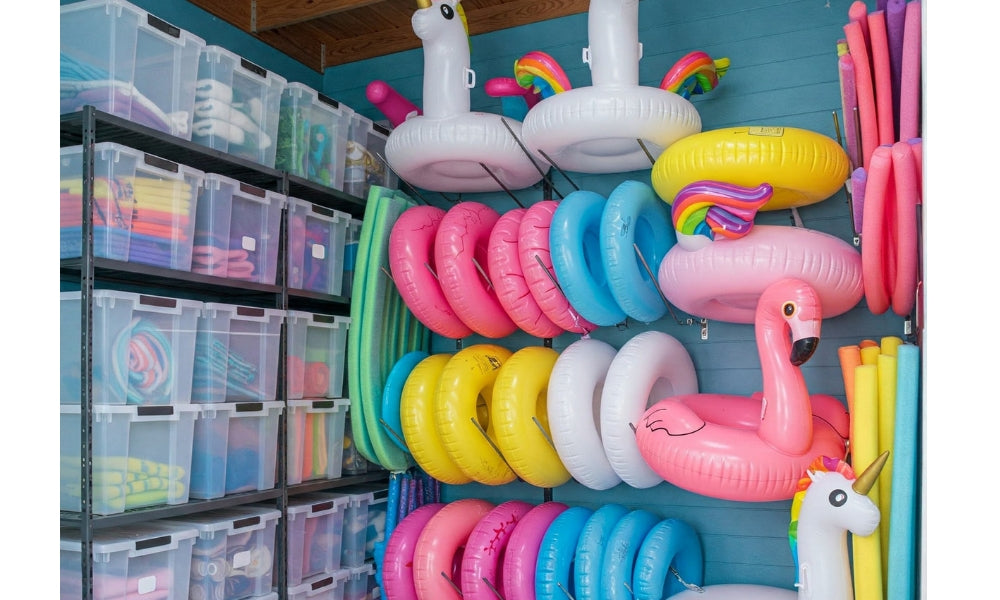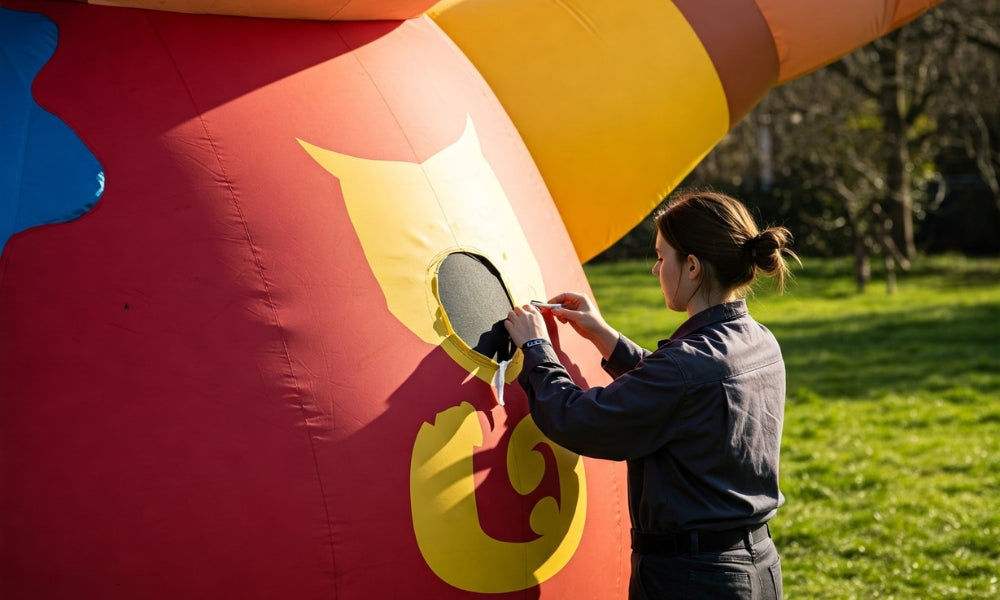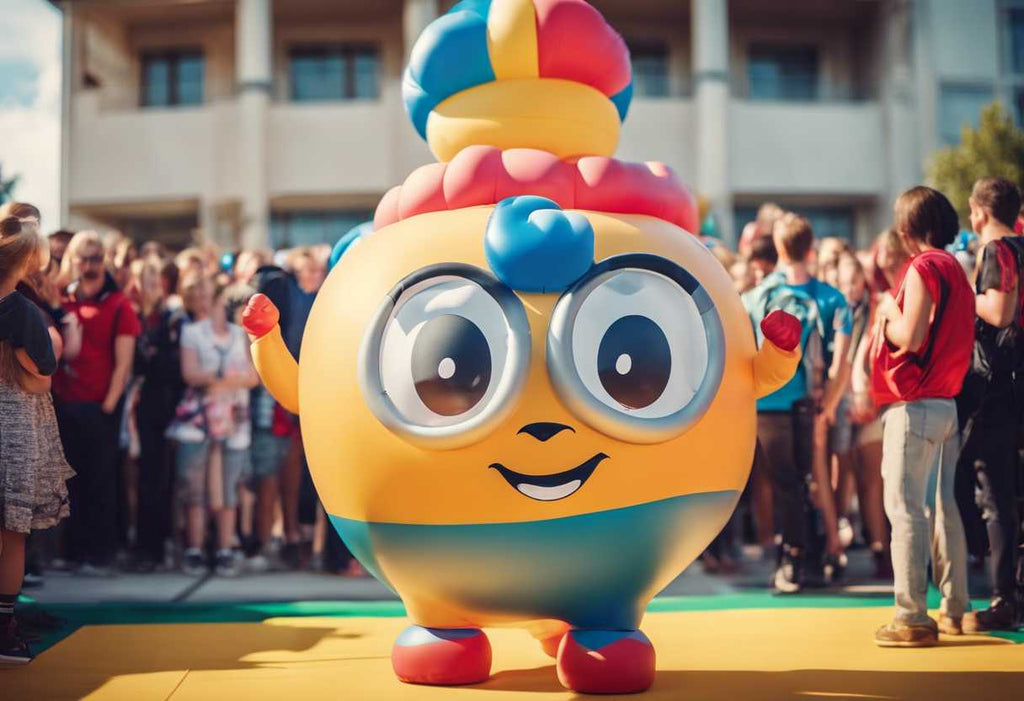If you can’t find a pool float design you like, you’ve probably wondered if you can get one custom-made. You sure can! But that brings up some other questions, such as “How are pool floats made?”, “What are pool floats made of?”, “Can I do my own design?” or “How long will it take?”
We’re going to answer all those questions. We’ll take you through the process of creating custom pool floats and look at the materials that are used in their production.
You might be worried that your design is too complex. Fortunately, the design itself isn’t really a problem. As long as it can be translated into an inflatable form, it can be made. Customers have requested all sorts of strange and interesting shapes.
Thanks to our experience and expertise, we’ve translated them into real-world pool floats. Let’s uncover how it’s done.
Step 1: Creating render and production files
Our design team receives high-resolution images or logos and turns them into a 3D mock-up to show what the pool float will look like. If you do not have a high-resolution image, do not worry. Our design team will vectorize the design you do have, converting them into an image we can use for production.
Once the client approves the mock-up, the design team converts the 2D artwork into a production file with all technical information such as dimensions, Pantone color codes, and any other specifications.

Step 2: Cutting the Material
We’ll get into the question “what are pool floats made of?” shortly, but for now, let’s understand how to make a pool float. First, the materials are cut according to the pattern of the final design. It’s essential that each piece is cut to the exact size while leaving enough material to join up with the others.
Step 3: Printing the Graphics
Once all of the pieces of the pool float are cut, they’ll be run through a printer to apply the graphics. The printing team will ensure that the printing has gone smoothly and there are no smudges. Then they’ll send the pieces on for assembly.
Step 4: Assembling the Float
The cap for inflating/deflating gets attached. Then the pieces get sewn together and sealed to ensure air won’t leak.

Step 5: Testing
The pool float gets inflated for at least 24 hours with air to see if there are any production issues. If it’s good to go, it gets deflated, rolled up, and shipped out.
What Is the Standard Lead Time?
From the moment we receive a design, we get to work translating it into the real world. Our designers present the client with drafts and refine them until the client is happy. Then we follow the steps you see above. We start by cutting material, printing graphics, assembling, and testing. Once it’s ready, we ship it out!
This process can take anywhere from 15 to 25 days depending on quantity, material, and how complex the design is.

Rush Process
Let’s say you need your pool float faster. We can make that happen! If your design is based on an existing idea or is a simple shape (like a beverage can), that will help speed the process. Also, we can work with your schedule if you’re on a deadline.
What Material are Pool Floats Made Of?
Wondering what are swimming tubes made of? There are several materials that can be used in creating a float. Which one you prefer will largely depend on whether you want the float to be inflatable or not.
Material 1: PVC
When someone refers to naphthalene, plastic, or vinyl pool floaties, this is the material they’re referring to. PVC stands for “polyvinyl chloride.” Generally, the answer to the question “what are pool floaties made of?” is PVC.

Material 2: Foam
Foam is handy if you know you’ll never need to deflate your float because it holds its shape. The kind of foam used for floats is usually EVA foam, a closed-cell foam coated with vinyl for extra durability. Most foam floats will still fold or bend for easier storage.

Material 3: Polyester Mesh
This will not be the main material but will be used in two ways. First, a polyester mesh can strengthen PVC in larger or more complex designs. Second, it can be used in the seat instead of PVC or foam.

Material 4: TPU (Thermoplastic Polyurethane)
TPU is a more durable alternative to PVC that is highly resistant to abrasion and can last many years with proper care. It is often considered more environmentally friendly than PVC, both in its production and disposal at the end of its life.

Are Pool Floats Toxic?
Pool floats are not toxic. While PVC sometimes contains phthalates to make the material more flexible and durable, Floatie Kings uses only the highest quality PVC material that is free from phthalates.
Another way to avoid phthalates is to use foam instead. Even if EVA foam is ingested, it most likely won’t cause any harm (other than an upset stomach!).

Why Choose Floatie Kings for Custom Pool Floats?
Whatever design is in your mind for a cool pool float, Floatie Kings can make it happen in the real world! If you want something simple like a swimming tube or pool ball, a hammock, or even a mattress, we will take care of that for you. If you want a pool float that looks like an anime mech suit, well, we can do that, too.
Whether you want PVC or foam, some crazy design that you never thought possible, a giant float, or a tiny one, Floatie Kings is the only call you need to make.
Final Thoughts
We’re sure that now you have all the answers to questions like “how are pool floats made” and “what are pool floats made of” and you’ve learned expert insights into the process and materials, helping you make informed choices.
As people look for more unique designs, the industry keeps exploring new ideas. Making pool floats is like blending art and practicality, giving us a fun way to enjoy the pool in style.













